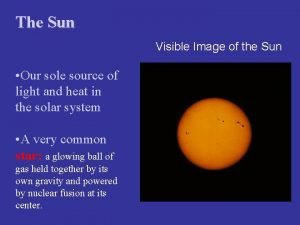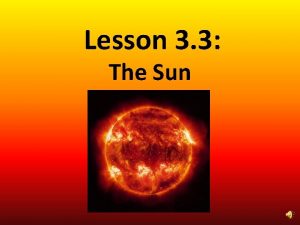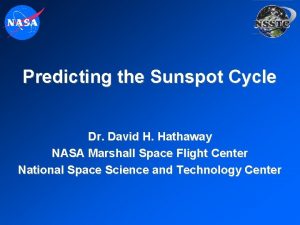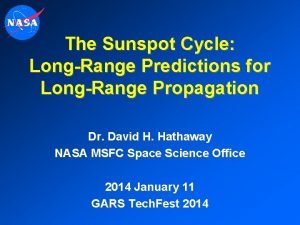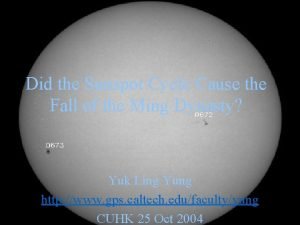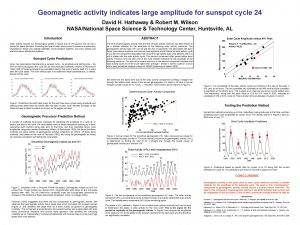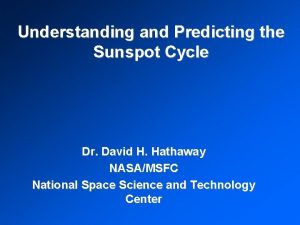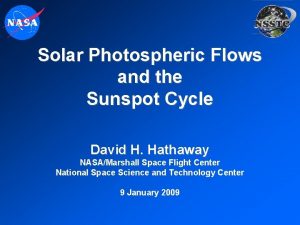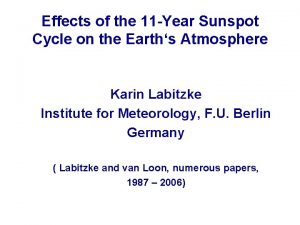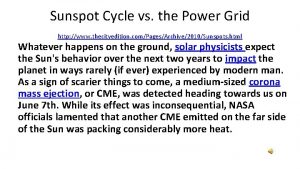Drill 7 1 What is the Sunspot Cycle
















- Slides: 16

Drill #7: 1. What is the Sunspot Cycle? 2. Why do we care about Sunspots?

Objective: SWBAT: Classify stars according to their spectral type.

AGENDA: • LIGHT/EM NOTES • Spectra Demo • Star Spectrum Gizmo

The Electromagnetic Radiation (Light – the Supreme Informant!)

Light Phenomenon • Isaac Newton (1642 -1727) believed light consisted of particles • By 1900 most scientists believed that light behaved as a wave.

The Electromagnetic Spectrum The electromagnetic spectrum represents the range of energy from low energy, radio waves with long wavelengths up to high energy, gamma waves with small wavelengths. https: //www. youtube. com/watch? v=cf. Xzwh 3 Kad. E

The Electromagnetic Spectrum More than meets the eye!

Wavelength • The distance from one wave crest to the next • Radio waves have the longest wavelength and Gamma rays have the shortest!

Visible light is a small portion of this spectrum. This is the only part of this energy range that our eyes can detect. What we see is a rainbow of colors. Red. Orange. Yellow. Green. Blue. Indigo. Violet ROY G BIV

• The colors we see in objects are the colors that are reflected, all other colors are absorbed. • When all colors are being reflected we see white light (white isn’t really a color)

How light or electromagnetic radiation is used in Astronomy • Astronomers use a tool called a spectroscope to separate starlight into its colors – in this way, they can tell what a star is made of, its temperature, luminosity and so on… • Astronomers can look at astronomical objects at different wavelengths…

So how does the electromagnetic spectrum help us study stars?

Spectra of a Star

Blackbody Radiation A black body is a body that is a perfect absorber of light and yet it is a perfect emitter of radiation as well. A star is a gaseous sphere whose surface behaves like a black body.

Blackbody • An object is a "blackbody" if the radiation it emits into space originates completely from its temperature • Blackbody spectra do not depend on an object's chemical composition, its size or its temperature.

• www. explorelearning. com • BDMQMWXZDR • Browse Gizmos: Star Spectra
 Sunspots magnetic field
Sunspots magnetic field Reddish loops of gas
Reddish loops of gas Reddish loops of gas that link parts of sunspot regions
Reddish loops of gas that link parts of sunspot regions Sunspot solar oven
Sunspot solar oven Thiếu nhi thế giới liên hoan
Thiếu nhi thế giới liên hoan Fecboak
Fecboak Chúa sống lại
Chúa sống lại điện thế nghỉ
điện thế nghỉ Một số thể thơ truyền thống
Một số thể thơ truyền thống Trời xanh đây là của chúng ta thể thơ
Trời xanh đây là của chúng ta thể thơ Hệ hô hấp
Hệ hô hấp Công của trọng lực
Công của trọng lực Các số nguyên tố là gì
Các số nguyên tố là gì Tỉ lệ cơ thể trẻ em
Tỉ lệ cơ thể trẻ em đặc điểm cơ thể của người tối cổ
đặc điểm cơ thể của người tối cổ Các châu lục và đại dương trên thế giới
Các châu lục và đại dương trên thế giới ưu thế lai là gì
ưu thế lai là gì
